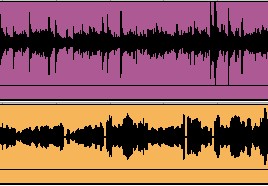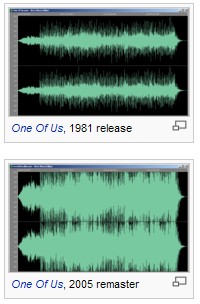 album
album
The Long Trip Home
 |
You know the old line:
Well, I’m gonna try anyhow. I am certain you will enjoy it. |
 album
album
 |
You know the old line:
Well, I’m gonna try anyhow. I am certain you will enjoy it. |
 new music
new music

Benjamin Franklin, aside from being a founding father of our country, the ‘discoverer of electricity’, a diplomat, an inventor and the guy that first formed public libraries and fire departments, was also quite the ladies man. In the recent HBO series, entitled John Adams, Franklin is portrayed in a less-than-iconic and promiscuous light while performing his diplomatic duties in France. I suppose when you’re a guy that can tame lightning and create counties your gonna have the women fawning over you.
In reference to Franklin’s escapades in France I entitled my most recent tune Franklin’s Harem.
In this recording the tune actually comes behind another tune that I recently posted called The Nobel Train. It has three parts. The first two are in 9/8 and the last part is in 12/8. So, I guess it is a slip jig sort of. You can find the sheet music here.
The Nobel Train / Franklin’s Harem by baconworks
 new music
new music
While my contest has been plugging away, I’ve been doing a bit of writing and recording myself. A couple months back I posted a new tune called On the Mend. More recently, I wrote another tune to go with it called Blaze in the Barn. Before Christmas I spent some time recording the set and ultimately learning quite a lot about mixing and how sound works in a mix, or in many cases, doesn’t work.

In my experimentation with this new set of tunes, I discovered an interesting phenomenon. What I found was that anytime I added compression to an instrument, it immediately sounded better. It actually took some time before I started questioning why this might be true. Without going into lots of technical details, the net effect of compression is that it essentially allows you to make quieter sounds of a track louder but without making the louder tones louder. This gives the listener the sense that the track is more solid and it is perceived as becoming louder. And, apparently, louder is better. Also, as I soon found out, I was not really the first person to stumble on this phenomenon.
Back in the days of juke boxes, you see, record executives discovered that the records that were most frequently played were the ones that were recorded the loudest. Humans, for some reason, perceive the louder records as being better and, in turn, are more likely to stick another dime in the juke box, baby. Thus, record companies started to look for ways to make their recordings louder than the competitions recordings. What resulted was a loudness war that is still raging today and is killing the quality of recorded music.
Well, if we perceive louder recordings to be better, then why is it killing the quality of recorded music you ask? The answer has to do with dynamic range. By compressing music, which allows studio engineers to make recordings louder, they are also squashing the dynamic range of the recording. Dynamic range, in sound, is the distance between the softest tones and the loudest tones and it is used in music to impart emotion. So reducing dynamic range essentially reduces the emotion.
One everyday example of dynamic range that we have come to depend on is that of the human voice. When we speak our voices naturally fluctuate in volume as a means of emphasizing our emotions. If we were to take out all the dynamic range in our voice we would sound very monotonous. Now, imagine taking that monotonous voice and making it loud all the time. The effect would be that all our conversations would consist entirely of yelling. While yelling certainly gets peoples attention, it also gets tiring very fast. And this leads me back to my recording discovery.
What I found was that when I added compression and, in turn, loudened my recording I thought, ‘Hot spit! That sounds great!!!’ But the more I listened to it, the more it started grating on my nerves, sort of like yelling. I had inadvertently stumbled into the loudness war, which is being fought between record companies that want their music to catch your attention as you flip by on your new satellite radio and the sound engineers of the world that realize that the greatest recordings are not devoid of dynamic range but instead, embrace it.
Take a look at the following example:

What you are looking at is a mastered stereo recording of an ABBA song from 1981 and then remastered in 2005. The first set of sound waves show a track with plenty of dynamic range while the second set of waves show much more sound and, consequently, represent a louder track, but one with much less dynamic range.
With all this in mind, I removed much of the compression I was using on my new set and found that I enjoy the track much more now. Anyhow, here is a mix of what I’ve been working on. I don’t know if it is a final mix because there are other issues I’m trying to address, but those issues are probably the subject of another post.
 new music
new music

For quite some time now I’ve wanted to record and album. The problem used to be that the cost for studio time was so high that I could only afford it in small doses. With the advent of low cost, high quality digital recording equipment, however, that problem has been virtually nullified. In addition, the distribution of music once required the pressing of an album. However, as we are well aware, the internet has also change that paradigm. So, here is the question I wrestle with; Is there any value in recording an album? Is the concept of an LP dead? After all, the lag time between recording a track and publishing is now trivial. Why stamp out any CD’s at all? The record industry, of course, is feeling the affects of this seismic shift first hand.
On one hand the album, a product of commercialism, feels out of place in todays vast digital world. On the other hand, I am compelled by the idea of sequencing a set of tunes in a way that carries the listener along as if on a meandering summertime ride on a wooded country road. I am well aware, however, that once the tunes make their way onto your iPod and in shuffle mode, the concept behind the sequencing is lost.
While I don’t have a good answer to my own questions, and while there are plenty of good reasons to move past the traditional album format, I am not willing to entirely abandon the notion just yet.
I guess that is a long winded way of saying that I’m gonna give it a go. I don’t know what the end result will look like but I have made one important decision already. As my ideas take shape and the music evolves I am going to blog about my creative and technical process of creating the album. The thing that I find both exciting and a bit daunting is the notion that the public critiquing process can happen as the recording takes shape instead of after it is complete. I am hoping that your critical feedback will help shape a better result. I am, therefore, urging you to offer your thoughts on what you hear or would like to hear.
As a first offering, I am including a recording of a jig I wrote last week. This is a test track that I intend on re-recording for a variety of reasons, the first being that I really did not know how to play it cleanly at the time of the recording since it was authored only minutes before. Also, I have been having trouble with some buzzing on my guitar, which affected the bass notes. Going forward, I am considering coupling the banjo with a mandolin in addition to centering the banjo, which is currently off to one side. I would also like to write another tune to go along with it but am finding that I just can’t force it.
The tune is entitled ‘On the Mend’ and was named for my friend Eddie Marshall, who was recently under the weather and unable to play music for a good month or so. I was happy to finally hear him say that he was ‘On the Mend’.